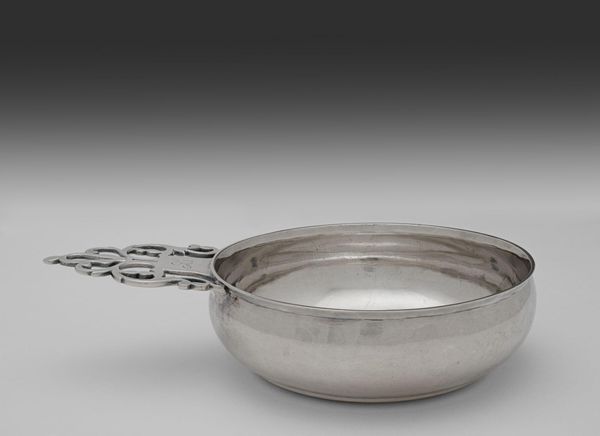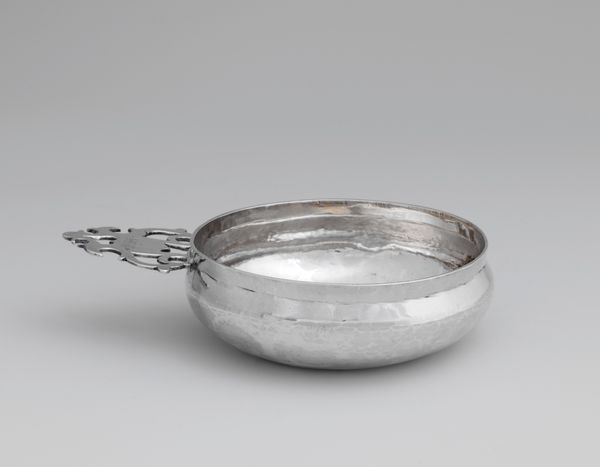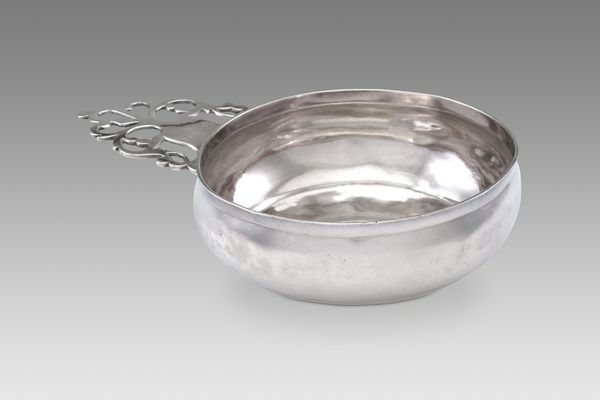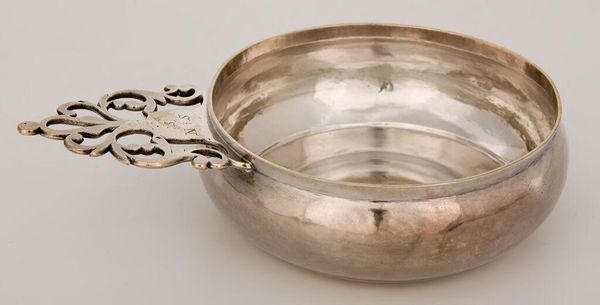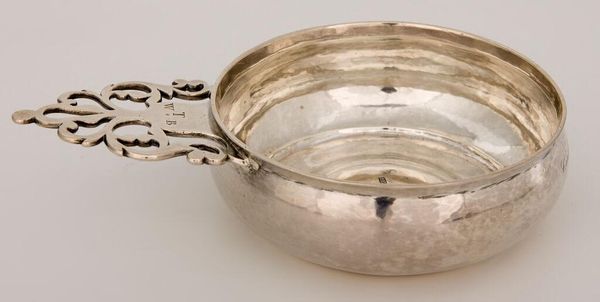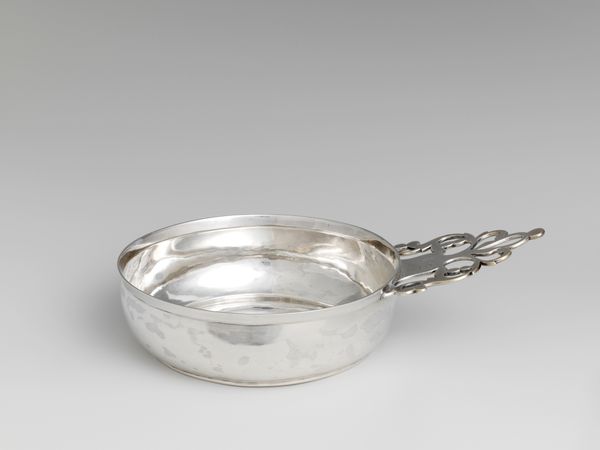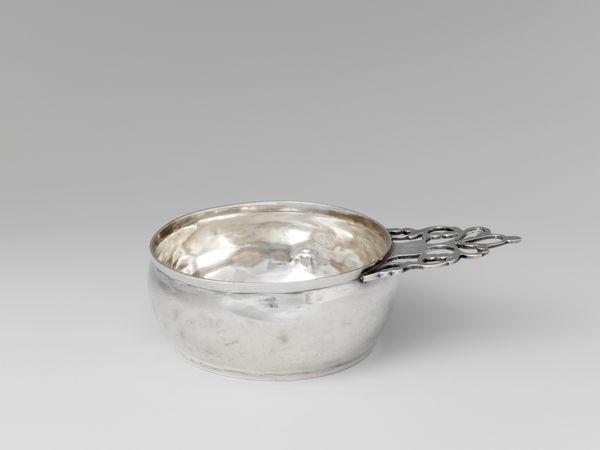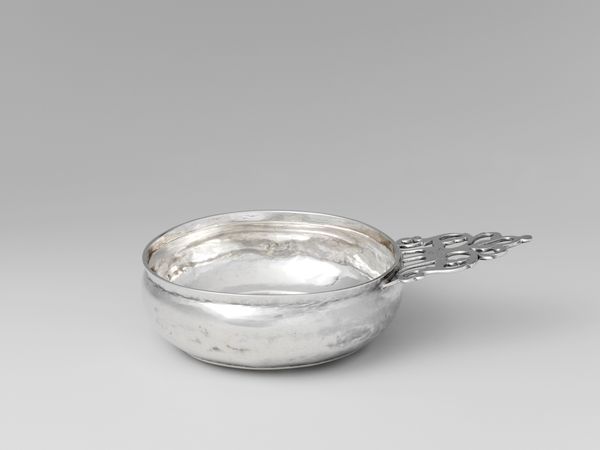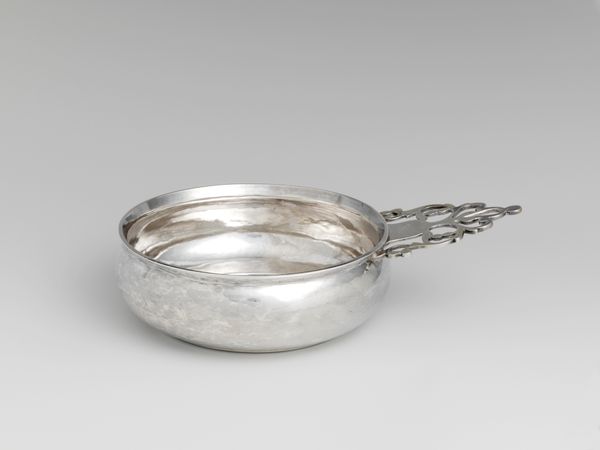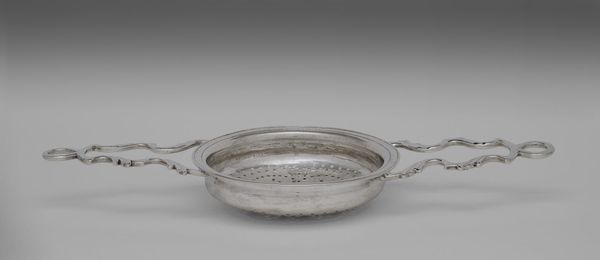
Porringer c. 1735
Dimensions: 5.2 x 19.5 x 12.5 cm (2 1/16 x 7 11/16 x 4 15/16 in.)
Copyright: CC0 1.0
Curator: The "Porringer" was crafted by Jacob Hurd, a noted silversmith active in the early 18th century. Editor: There's something deeply comforting about its simple, almost hammered texture. It feels both precious and utilitarian. Curator: A porringer like this was a personal eating vessel. Beyond the functional, the silversmith’s mark on the handle speaks to a maker's identity and the value placed on craftsmanship. Editor: And it's interesting how a piece like this, made from precious metal, signals status. Who was afforded the luxury of dining from silver in this era? What narratives are excluded by its presence here? Curator: Precisely. Silver carried social weight, but also a perceived protection against illness—a symbolic, if not always effective, safeguard. Editor: It makes me think about the stories it could tell, the meals it served, the hands that held it. It’s more than just a bowl; it’s a vessel of history. Curator: Indeed. Objects like this connect us to the material culture and beliefs of past lives, providing a tangible link to our shared human story. Editor: And for me, it highlights how consumption and class are always embedded in the objects we leave behind.
Comments
No comments
Be the first to comment and join the conversation on the ultimate creative platform.
